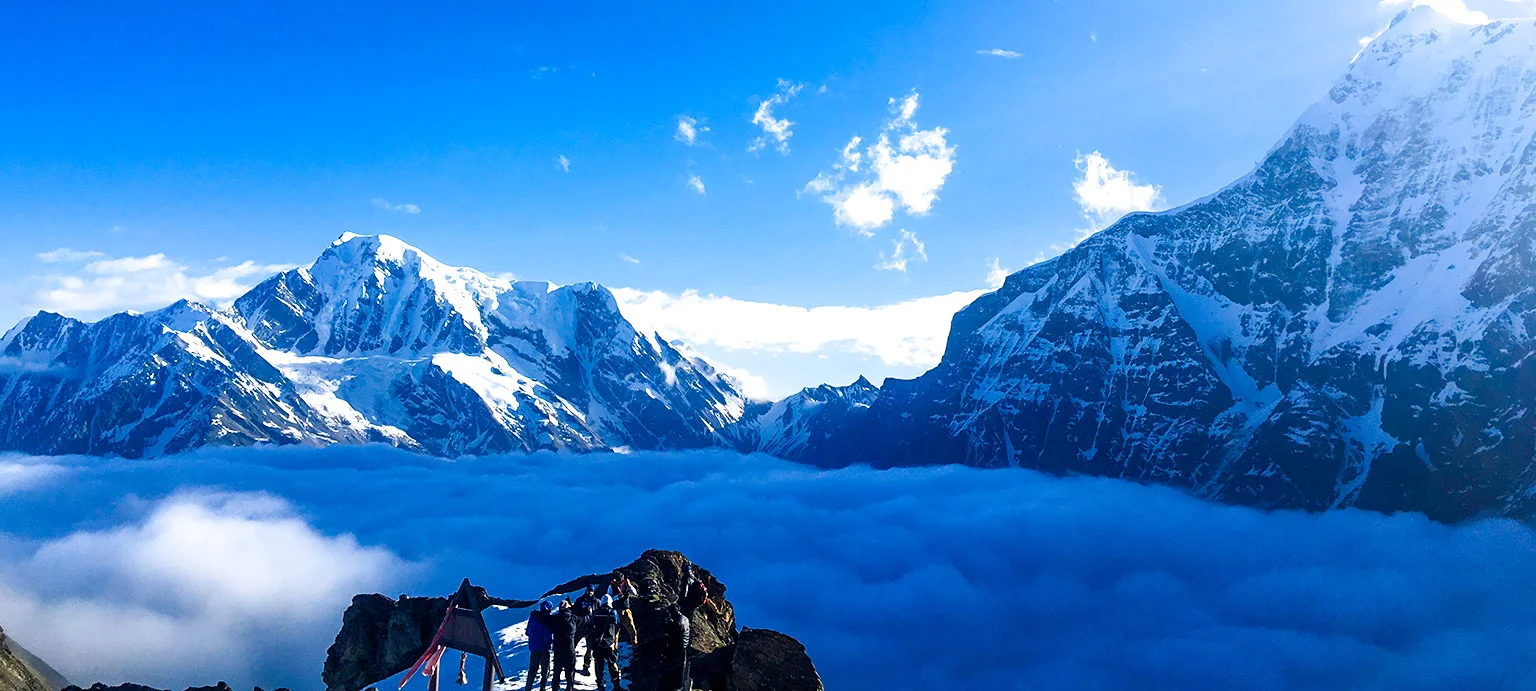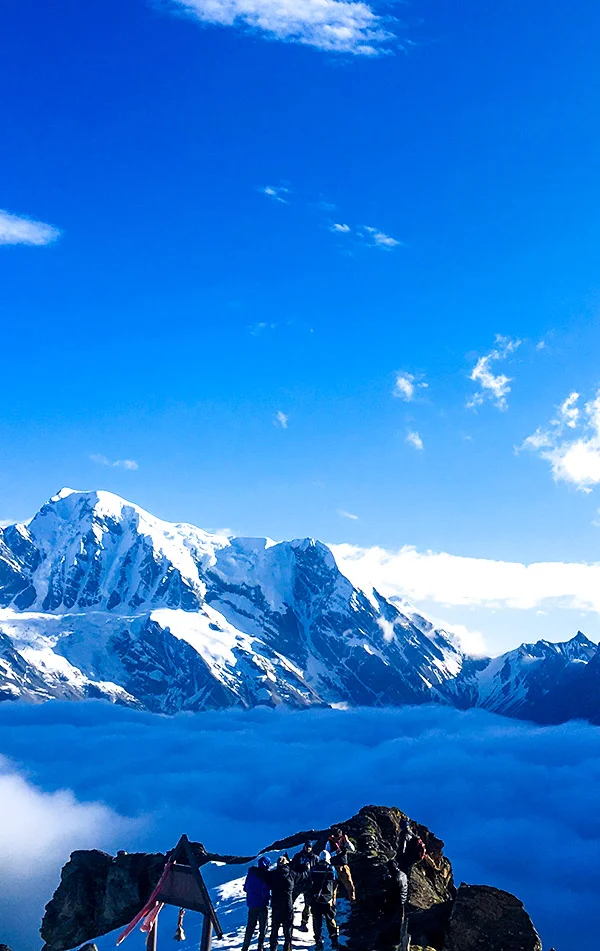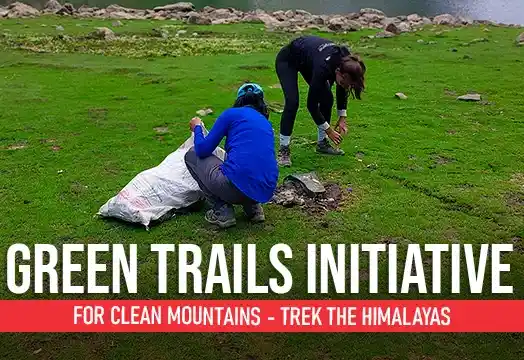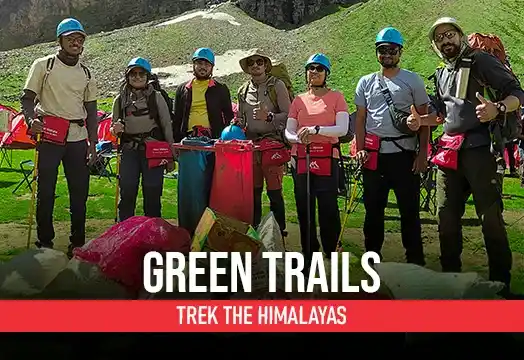Roopkund Trek

Region
Uttarakhand | India

Duration
8 Days

Max Altitude
15696 Ft.

Trekking Km
53 KM

Grade
Moderate to Difficult
Get in Touch with Our Trek Expert
Monday - Saturday: 10 AM to 09.30 PM (GMT +5:30)Sunday: 10 AM to 05.30 PM (GMT +5:30)
Get in Touch with Our Trek Expert
Monday - Saturday: 10 AM to 06 PM (GMT +5:30)Overview
Trek Name: Roopkund Trek
Days: 8
Adventure Type: Trekking
Base Camp: Lohajung
Season:Summer | Autumn |
Month:April | May | June | September |
Country: India
Altitude: 15696 Ft.
Grade: Moderate to Difficult
Rail Head: Kathgodam
Stay: Camping (Twin sharing) & Hotel/Guesthouse
Food: Meals while on trek & at Hotel/Guesthouse (Veg & Eggs)
Location: Uttarakhand
Distance: 53 Km.
Trail Type: Circle trail | Camping in various locations, starting and ending at the same point.
AirPort: -
Highlights:
- 5% GST will be applicable on Trek Cost and Add-ons
- Services Kathgodam to Kathgodam | Included Transport
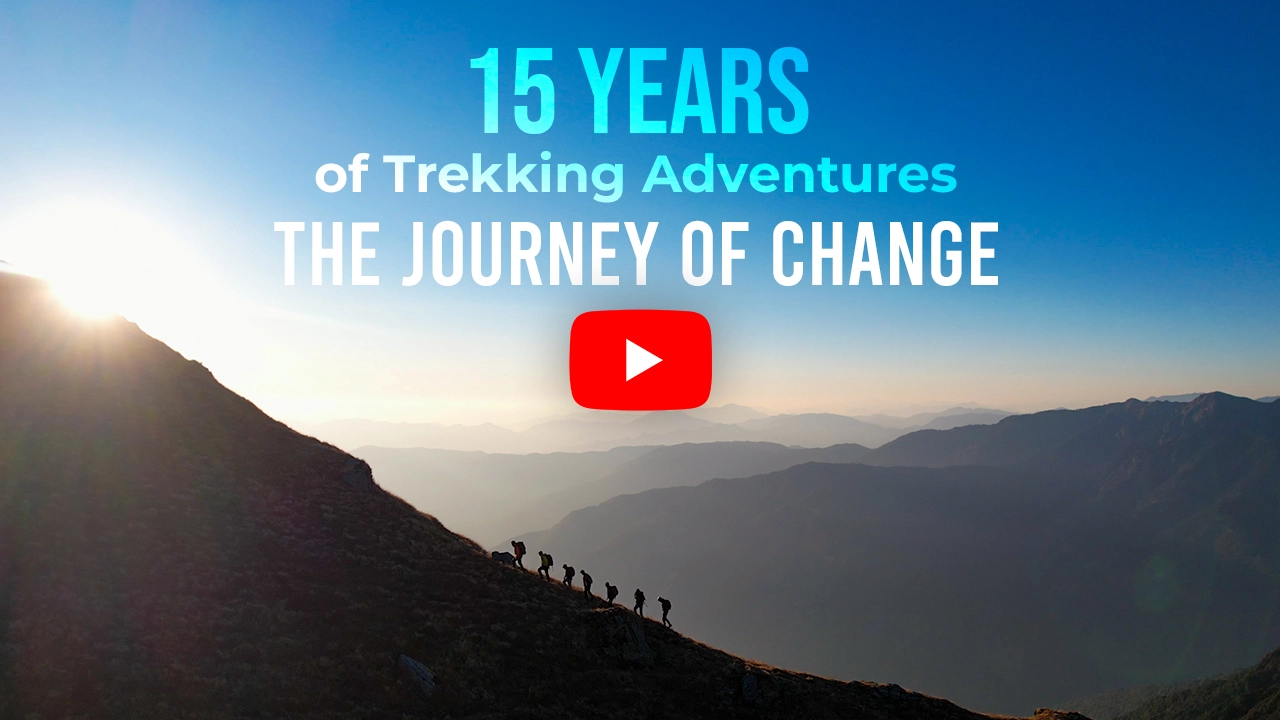
Why is Roopkund a Must-Do Trek?
Roopkund is a famous glacial lake in the state of Uttarakhand in India. This lake is famous due to more than five hundred skeletons of humans that are found at the edge of the lake. It is located in the Himalayas and rests at an altitude of nearly 4,800 meters. Roopkund is located in the Chamoli district of Garhwal. It is closer to hill stations like Nainital and Kathgodam. At a distance of 217 km from Nainital and 235 km from Kathgodam, Roopkund is one of the major adventure attractions for people in the country and those traveling from abroad. Roopkund, which is located in the lap of Trishul massif is also known as the ‘mystery lake’. You can find human skeletons at the bank of the lake, which are believed to belong to the Palaeolithic age.
These are believed to be the skeletons of the heroes who had fought here in earlier times. Along with the skeletons of humans, you can also find the skeletal structure of horses and other animals. There are reports that these skeletons belong to the 12th century to the 15th century. It is believed by specialists that the death of many people in this region was a result of landslides, blizzards, or an epidemic. The human skeletons were re-discovered in 1942 by H K Madhwal, who was a Nanda Devi Game reserve ranger.
Later in 2004, a team of Indian scientists along with some Europeans visited the area to gain more information about the nature of the skeletons.
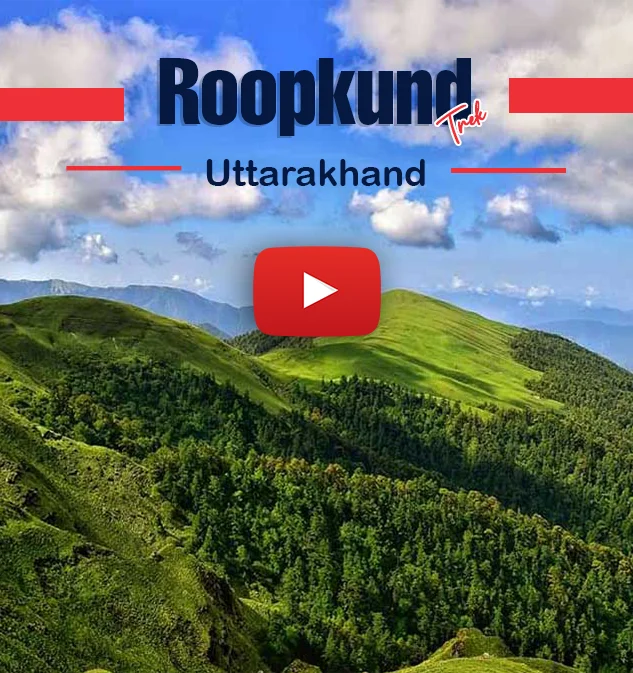
Who Can Participate
- Age Requirement:
- Minimum 14 years
- First-timers are welcome, though prior trekking experience is preferred. Good fitness is a must.
- Fitness Criteria:
- If the trekker wants to carry a backpack then he/she should be able to carry a 10-12 kg backpack. If opt Off-load option then the trekker should be able to carry 3-5 kg backpack.
- If a trekker's BMI is more or less than the normal range (18-27), please consult our Trek Coordinator before booking.
Loved it? Do it again for free!!!
At Trek The Himalayas, we understand that things don’t always go as planned. If you couldn’t complete your trek or just want to experience it once more, we’re giving you a wonderful opportunity – the chance to do the trek again without having to pay the trek fee again.
Pay a one-time fee to select your favourite trek, and you can repeat it as many times as you want within 5 years.

Terms and Conditions:
- The offer is valid for 5 years from the trek departure date.
- Participants are not required to pay the trek cost again, but they will need to cover transportation, insurance, and trek permit costs.
- This offer is non-transferable and is only applicable to TTH's limited fixed departures.
- The offer does not apply if the participant has received a refund, a voucher, or a transfer to another trek that has been used previously.
- The offer will be activated once the participant reaches the trek base camp.
- This is not an offer linked to any purchased package; rather, it is an initiative extended by TTH out of goodwill, without any cost to the trekkers.
- Trek The Himalayas reserves the right to cancel this offer at any time, in case of:
- Disobeying the safety regulations, trekking rules, or the code of conduct
- Black listing due to bad behavior, payment issues, or providing inaccurate information
- Anything that would damage the brand or reputation of TTH
- In order to rebook, just fill in our booking form online or call our team.
Roopkund Trek Itinerary
Kathgodam to Lohajung
The journey will take not more than 10 hours, which includes one or two breaks. The serpentine road goes through the region of Kumaon and covers deep valleys of Shivalik mountain ranges. The road will take you to Gwaldam which lies under the administrative district of Garhwal. The road goes through coniferous forests and unrelenting curves. Though there is a direct road from Gwaldam to Deval, the final destination of the day, it is not preferred due to damages at various places due to the yearlong rains. Via Nandkesri the distance to be covered is less, around 11kms, but it is better to walk on a longer, but safer trail through Tharali, which is around 36kms. Around 2 hours of the ride will take you to Deval, a village with all provisions of purchasing food and kerosene required for the rest of the journey. The days last stretch of the journey is from Deval to Lohajung. The extremely curvy and winding road gains considerable height. The roads are so thrilling to drive on that sometimes even the slightest of oncoming cars and trucks send Goosebumps. It is generally rainy and foggy most of the time and temperatures remain very cold. The night is spent at a tourist rest house or nearby lodges.
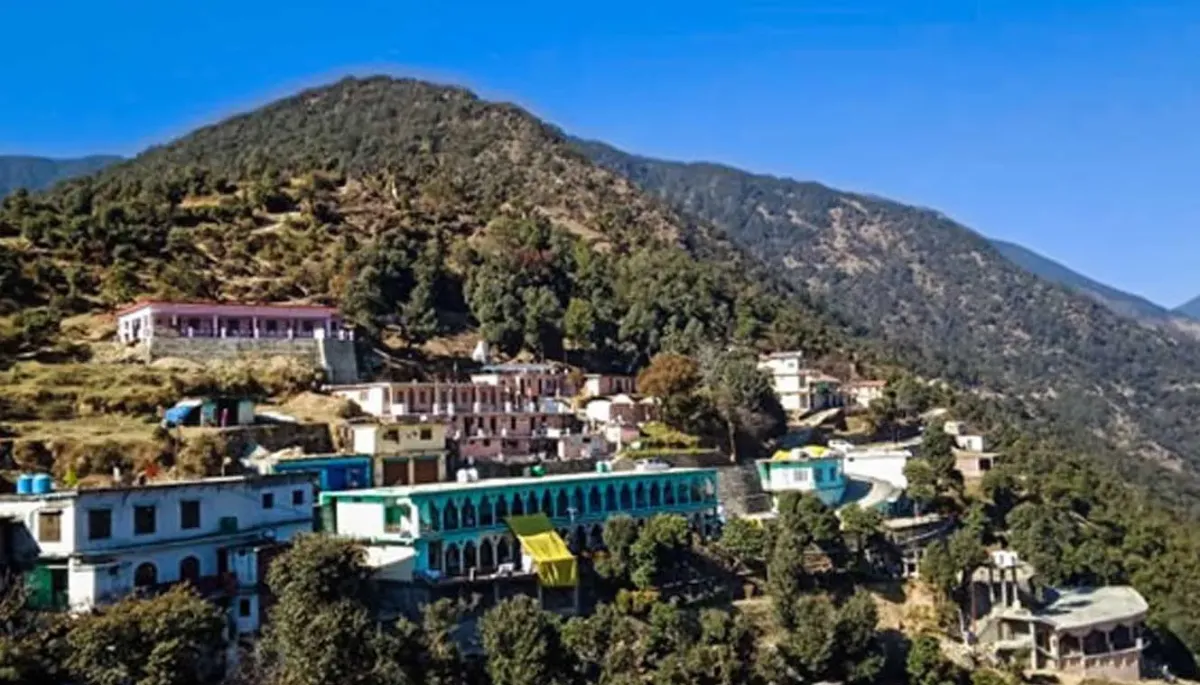
Lohargunj to Didna Village
The actual trek begins today. After a good home prepared breakfast, the walk starts on the level ground with slight ascent on the jeep road; the road goes till the village of Wan. An hour and a half walk on the flat surface will take you to Kulling, which is located at a distance of around 6km form Lohajung. Kulling is a peaceful village in the district of Garhwal, with a small pool of the population; it is filled with the beauties of nature. Exotic birds can be spotted very easily; the air feels crisp and fresh. After a break at Kulling, you take a right turn and gradually descend towards the village. At the start, you will notice a narrow concrete plain which cuts through houses and fields and takes you to a small stream. This small stream is fed by Neel Ganga. You descend further till you reach the bed of Neel Ganga. Go ahead and cross the cemented bridge and then start climbing the ridge on the right side of the bridge. The road ahead is moderately steep and ends at the village of Didna, situated at an altitude of 2450mts, 8000ft. The trail encompasses evergreen alpine forests and trees which are huge in size. After a climb of around two hours, you reach the top of the ridge; the view ahead is magnificent. It is surprising to find huge open lands at such a high altitude on the lap of the mountains. There are two villages very near to each other Didna and Kuling, basically they host the same type of people and trekkers. The first village is habited during the summer and monsoon months while the second one is popular during winter. The days trek is over at around 3pm, after which a hot lunch is enjoyed. Total distance covered during the day is approximately around 10kms, and the night is spent in a traditional guest house.
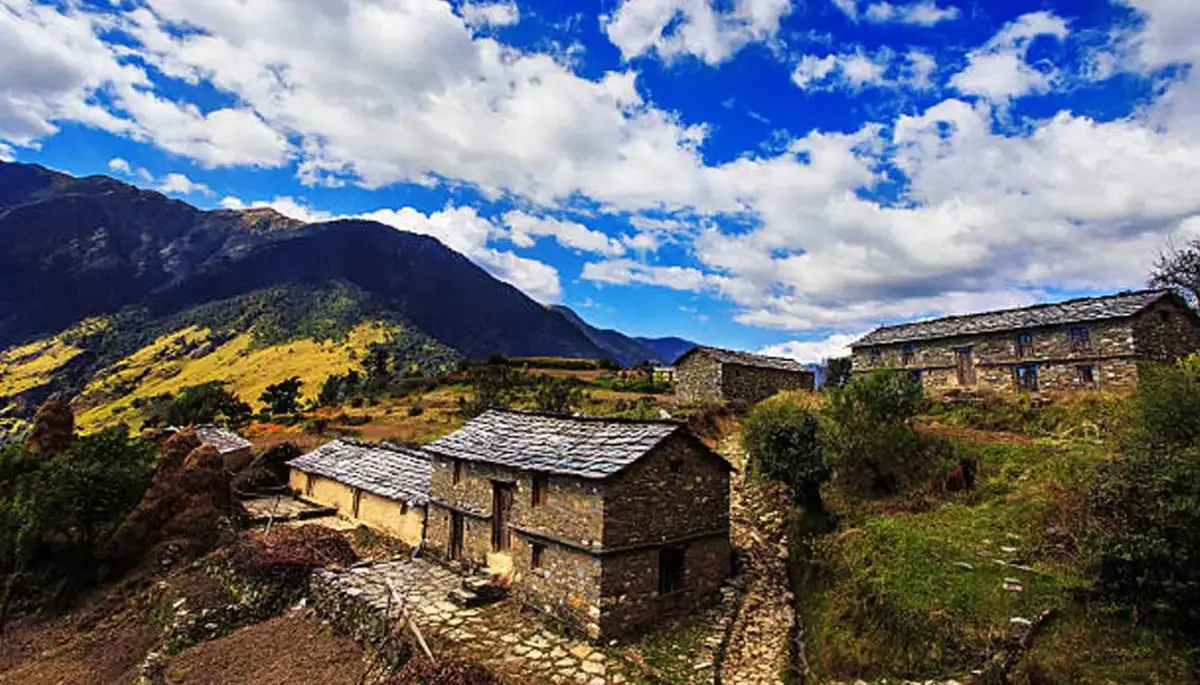
Didna Village to Ali Bugyal
Today's trek involves trekking through the beautiful village of Ali Bugyal, which located at an altitude of 3400mts or 11000ft, is one of the highest inhabited locations of the country. Ali Bugyal is on top of the mountain and is clearly visible from the backdrop of Didna. The trek will take you to climb on top of this mountain, after the start the trail will take out of the village. On the right, the trail is slightly ascending with a very gentle gradient. On the way, temporary settlements of local shepherds known as Tolpani and their huge herds of sheep are a site to behold. They are very friendly and warm in welcoming people; you can even share their lunch, which they think as a friendly gesture. On the other hand, the trail on the left side is short in length but is steeper. But it doesnt really matter which trail you take, eventually both of them will take you to the same destination. Oak, Birch, and Rhododendron trees are the only trees that grow in these areas, and are magnificent and huge in size. According to locals, anyone visiting the place during the spring season can see the unbelievable view of the valley covered with thousands of Rhododendron flowers in vibrant colours. After reaching the mountain top, the tree line gradually recedes, and the plain grasslands start. The climb takes around 3 to 4 hours, after which right in front of your eyes, the Himalayas most attractive meadows, Ali Bugiyal welcomes you. The view is very similar to the default wallpaper of Windows XP and is a treat for the eyes. During summer months, wild horses and cows graze the fields which are filled with vast stretches of grass and flowers of various bright colours. On a clear weather, it is easy to spot the peaks of Trishul and Mrighthuni, the tallest mountain peaks in this part of the Himalayas. The mighty Trishul beckons to be climbed upon and feels as there is some hidden energy which attracts towards itself. After crossing the meadows, there comes a small face on the way, and another half an hour of trekking will take you to Bedni, the camping spot for day 3. After lunch, visit the nearby temple in Bedni Kund, if the weather is clear you might be able to view the Garhwal Himalayan ranges at its glory.
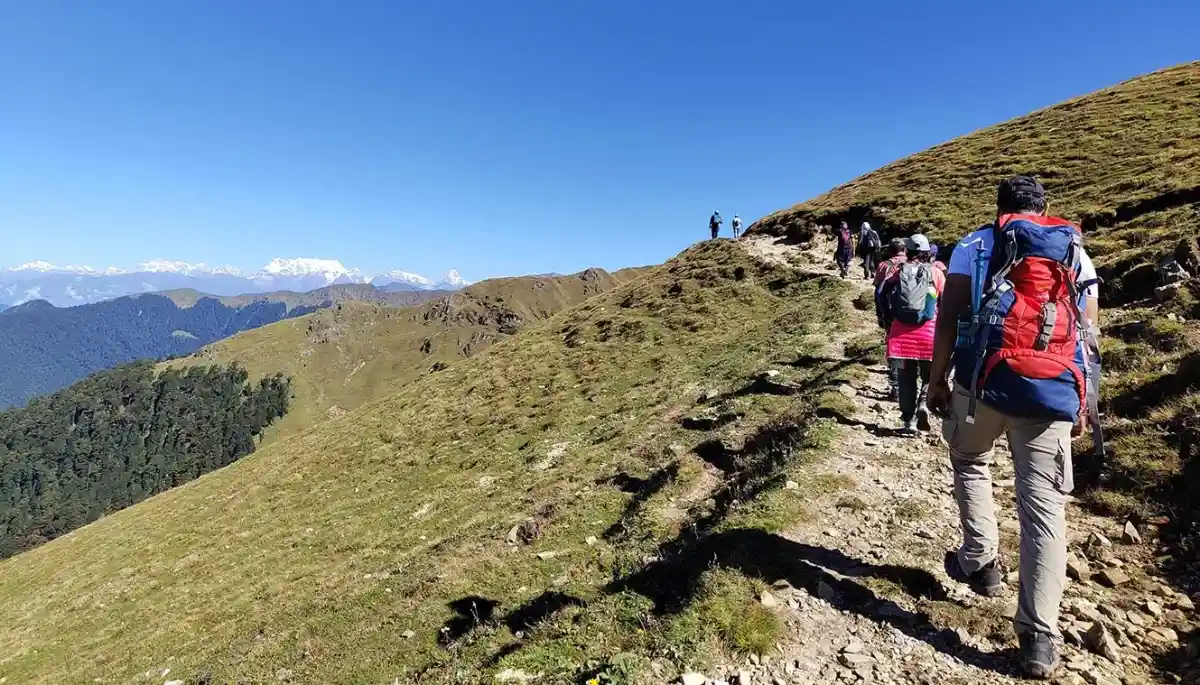
Ali Bugyal to Patar Nachauni via Bedni Bugyal and Ghora Lotani
Today being the 4th day of the trek you can have the choice of starting a bit late and sleeping a little bit extra. Your next camping location is Gora Lutani, which is a perfect camping spot. Keep on walking and enjoy the picturesque locations in the adjoining area. Along the way, you will come across Patat Nacholi, a rather unused and vest able landmass. This day you will make steep altitude gain from around 12,500ft to 14,500ft. The high altitude and the long continuous walks will make your legs hurt, and you will also start feeling the effects of the weather changes and the thin air will make breathing difficult. But don't worry; the wonderful surroundings will give you enough motivation to reach your destination. The positive vibes flowing in the air lets you forget all your troubles. After a travel of around 10kms, the campsite for the day is reached. Ghora Lotani will give you a good night's sleep, but the next morning waking up early is very crucial as it is going to be an exciting day ahead.
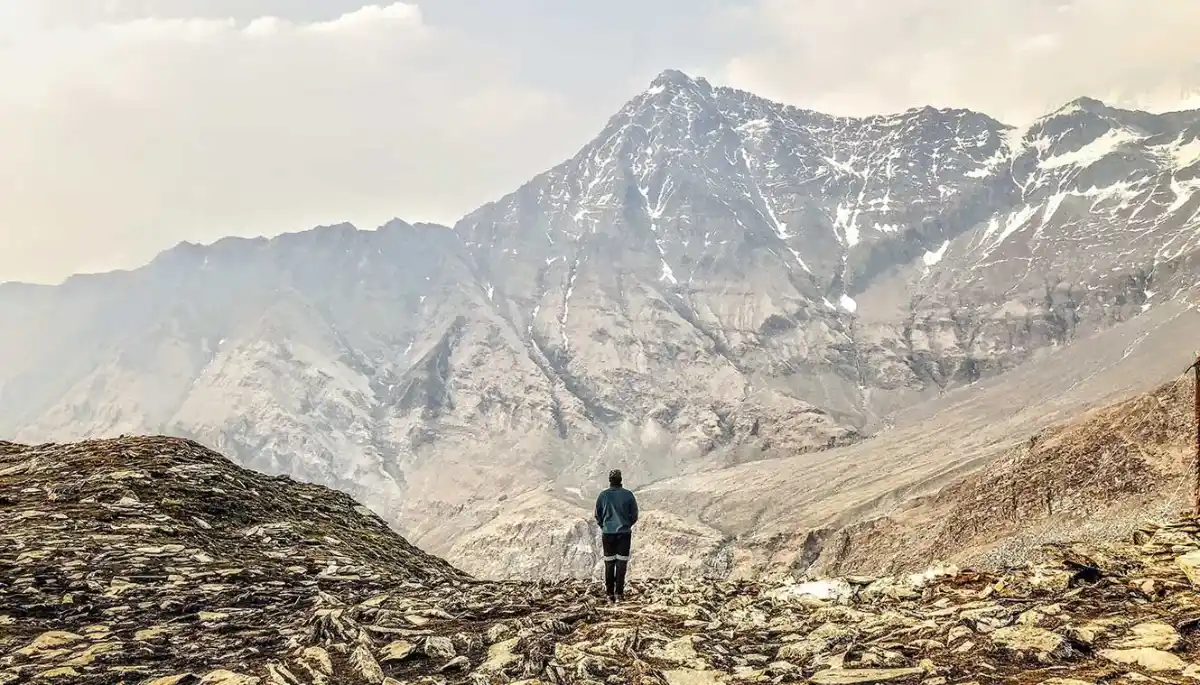
Patar Nachauni to Bhagwabasa via Kalu Vinayak
Wake up early and brace yourself for the longest day of trekking. Have a filling breakfast and dont forget to do a few stretches. It should be kept in mind that today; the trekking will approximately cover 10kms and that too on a steep slope. Walk towards Bagubasa, located around 14000ft above the sea level. This road will also take you across Kalyuvinayak temple. The most thrilling part to see the temple is to travel up 2kms, also equivalent to gaining an altitude of around 200ft. The path leading to this temple is very uneven and zig-zag in shape. It is essential that proper safety gear and clothing is ensured before the days trek is even started. The walk should be done very slowly and carefully; one small slip and anyone can get hurt very badly. But since there is no gain without pain, the gifts await you at the top. It is difficult to understand how someone could create the temple at such a height. The temple is basically traditional in design and construction and has been there for centuries. As the altitude increases, the air gets thinner, and the quantity of oxygen also decreases, this might lead to headaches and acute stomach pain, but don't worry, take some rest for a while. The temple is carved out of stones with ultimate precision and perfection; it installs divine intervention in your mind. From the temple, you can view Roopkund, the final trekking destination. The view is just magnificent one with shining and sparkling Trishul on one side and bell shaped Nandagunti on the other. You further follow up the uneven trail leading to Bhaguabasa at 1km distance from there. The region has its own specialities, flowers that bloom only during the monsoon months. You currently stand at a very high altitude of 14000ft and the terrain seems to look rough and not so easy to traverse.
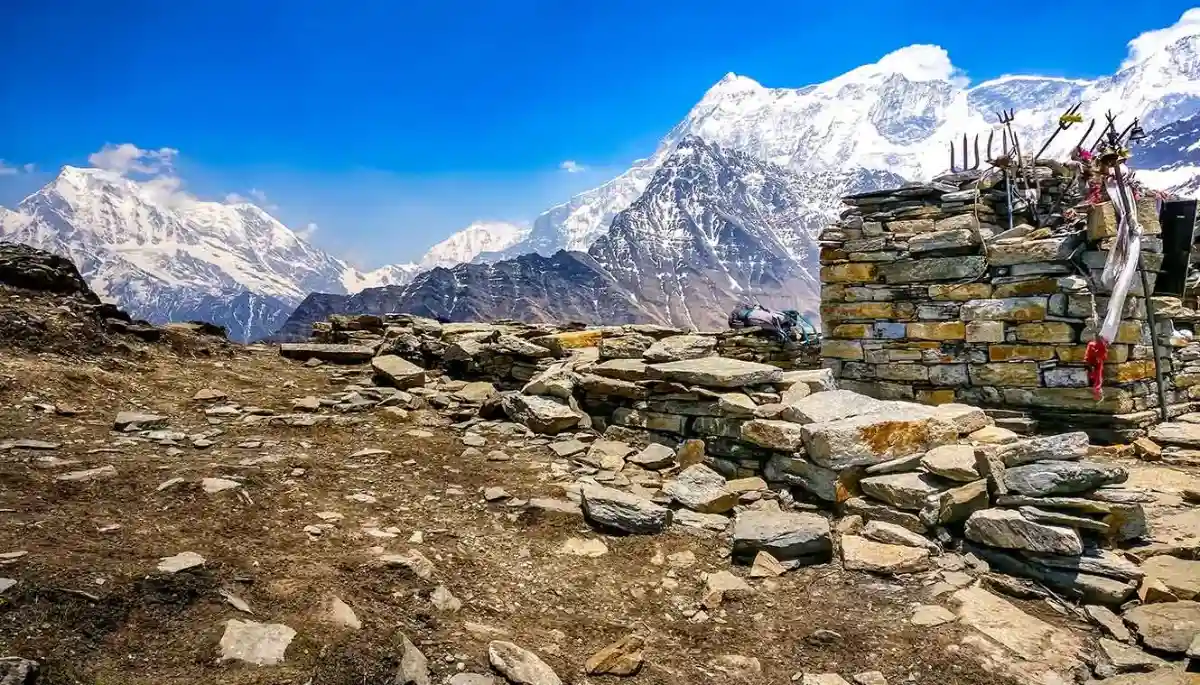
Bhagwabasa to Roopkund and back to Bedni Bugyal
Start early on this day to reach the mega destination – Roopkund. At an altitude of more than 16000ft, it is surely the highest point on the trek. Though the path is not that complicated to climb, but even the 4km walk will take a breath out of you and tire you like hell. But no trekking is easy, right? During monsoon, the snow covering this area is very less and shallow, which makes the path reveal itself properly. From Bhaguabasa, your first checkpoint is Chhirianag which means ladder like snake. From this place, the next point lays Roopkund – The mystery island. The lake of skeletons is one of the most mysterious places in the world. Till date, even archaeologists, and scientists are not able to find out how there were so many skeletons on the bed of the lake. There are theories and fables which state that once a king and his fellowmen were going to Nanda Devi, and, unfortunately, a severe hailstorm led to their deaths. If you are extremely lucky, then from the edge of the lake you can clearly see somewhere around 300 human skeletons. This view in itself is breath taking and people go crazy after seeing this. From this place, the trek will be along a hard and steep terrain. After the steep climb gets over, you will find the Nanda Devi temple. This is very near to the Nanda Devi Biosphere reserve. A perfect site for taking good snaps with friends and other fellow trekkers. Depending upon the weather and the co-climbers conditions may decide to risk on the Junargali pass which stands 16700 feet from sea level. Without any meteorological interference, you would need about 45 minutes to climb. You will have to pass through Bhagwabasa on the return journey. These places are filled with sheer exhilaration and thrill. The descent along the path is twice difficult that of the ascent it is so steep that one might have the feeling of falling down from the top. Move along to discover a cave like structure called as Bhagwabasa or the abode of the tiger. You further climb down to reach PatarNachuni about 12500 above ground level. You continue backwards through Ghora Lautani back to Bedni Bughyal. Your day will end at the campsite amidst lush greenery. This trip is one of the longest, covering over a distance of 15km taking about10-15 hours for completion. The legs will push you to deep sleep as they need a lot of rest. But before going to bed, do realize the whole trek was not at all easy and requires a whole lot of determination and courage to complete it.
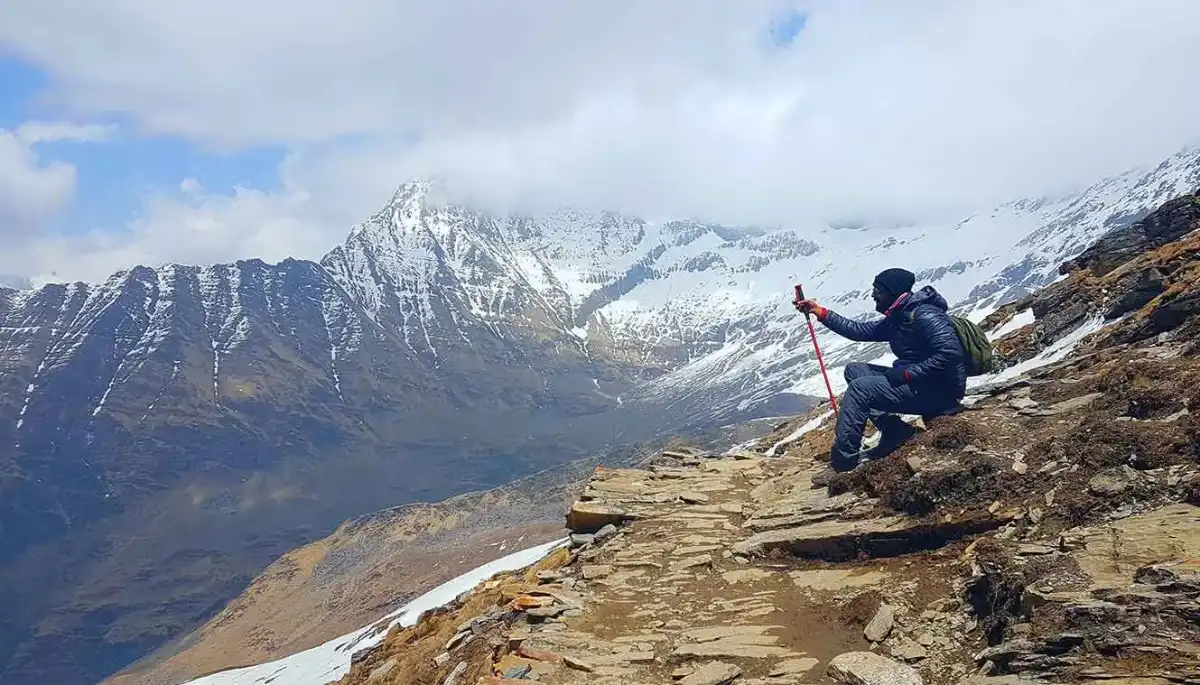
Patar Nachauni to Lohajung via Bedni and Wan
Day 7 is probably the last day of the trek where you will have to walk and return to the camp site at Day01. Descending and climbing up are two things that are very different, though the path remains the same. This time you travel on the right side of the trail and it seems a simple path as compared to the previous days strenuous affair. For the first time, you will see wooden huts dotted along the path. After travelling a little more, you are now able to see the road dividing itself into two lanes. You need to take the one which leads to right. It goes down and down, and as you descend further you can again see that you have entered the forest region with trees all along the lane. The bird tweeting and the cool aiwin past your ears are a treat that you will rarely get to feel. Due to the varying slope, trekkers are cautioned to take each and every step very carefully; otherwise one might end up hurting themselves. Shortcuts though may look rewarding must be avoided as much as possible as the terrain is pretty rough. After walking a few more yards you near an opening inside the dense forest called the Gahroli Patal. You continue our journey till you reach the banks of the river of Neel Ganga. Once you reach the river bed, your journey continues, till you reach the wan village called Ran ka Dhar. The village of Wan is the next stop after which you descend further. Wan feels like very much at home, a big village with hills and mountains covering the edges, a view to cherish all your lives. As you travel a few more yards at the road and you find the car waiting to pick you up. The distance covered for the day for the descent is nearly 18km and requires about 10 hours. It needs an hour from Wan to reach Lohargunj. The road taken by car is rocky. Once you reach back the tourist guest house you can rejoice all the memories of the trip and comfortably sleep on the warm bed.
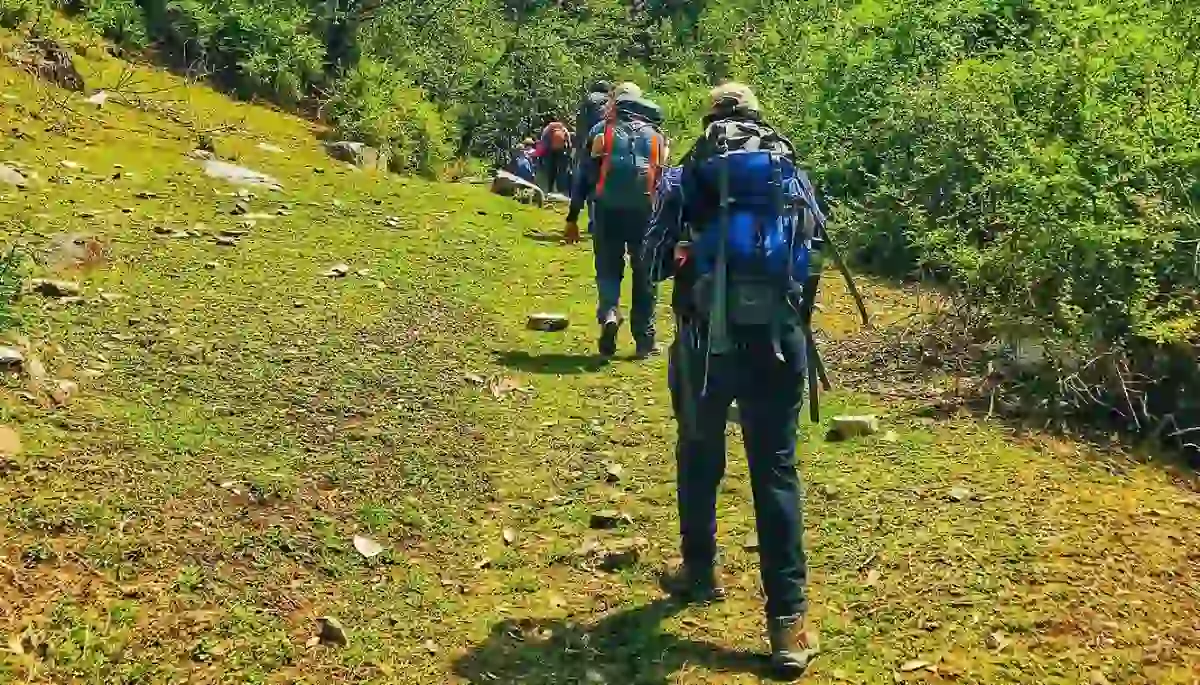
Lohajung to kathgodam
Wake up early in the morning; have a nice cup of tea and an awesome hillside breakfast. Today you will leave for Lohargunj, along with all the beautiful and unforgettable memories pack your own stuffs and luggage. Your cab will drop you at the Kathgodam railway station. The car journey will take something around 10 hours, and do make sure that you are carrying mint and tablets which prevent nausea. From Kathgodam railway station, you will find trains to various locations. Board your respective train and take along a healthy experience with memories that will never fade away.
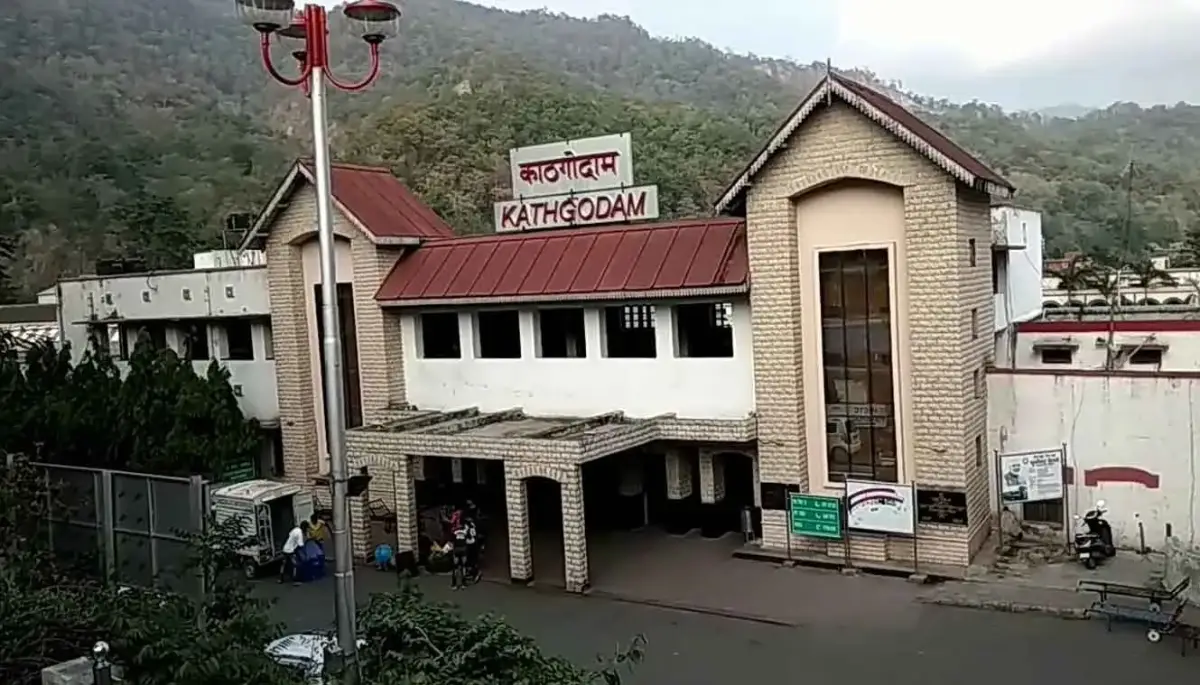
Day-1: Kathgodam to Lohajung
- Altitude 7,662 ft.
- Stay in guest house.
- Drive 210 km (10 hrs drive).
- Local market and network is available.
- Pick up time 06:00 am at the parking of Kathgodham railway station.
- Route:- Kathgodam - Bheem Tal - Almora - Kausani - Gwaldam - Dewal - Lohajung.
Day-2: Lohargunj to Didna Village
- Trek 6.5 km.
- 7,662 to 8,045 ft.
- Reach Didna before lunch.
- accommodation in village home stay.
- No local market but Network is available.
- Till ruan bagad bridge gradual descent (4.5 km).
- Refill your water bottle at ruan bagad bridge from Neel Ganga river.
- After ruan bagad bridge 2 hours of a steep ascent to Didna Village (2 km).
Day-3: Didna Village to Ali Bugyal
- Trek 10.5 km.
- 8,045 to 11,320 ft.
- Accommodation in tent.
- Carry water and ors both.
- Reach Ali Bugyal by late noon.
- Keep your wind and waterproof handy.
- Tolpani is the last point for drinking water.
- First half of is through oak and rhododendron forest (Steep ascent).
- Second half of the trek is through big alpine meadows (gradual ascent).
Day-4: Ali Bugyal to Patar Nachauni via Bedni Bugyal and Ghora Lotani
- Trek 7 km.
- 11,320 to 12,818 ft.
- Easiest day of the trek.
- Accommodation in tent.
- Reach Patar Nachauni before lunch.
- Ali Bugyal to Bedni Bugyal (gradual ascent 2 km).
- Bedni Bugyal to Ghora Lotani (gradual ascent 4 km).
- Ghora Lotani to Patar Nachauni (gradual descent 1 km).
- Spend some time at Ghora Lotani good for acclimatization.
- Ware proper clothing (this is the place where most of the trekkers get AMS).
Day-5: Patar Nachauni to Bhagwabasa via Kalu Vinayak
- Trek 4 km.
- 12,818 to 14,117 ft.
- Accommodation in tent.
- Reached Camp site by lunch.
- Patar Nachauni to Kalu Vinayak Tempel .
- (first 1 km is gradual ascent and rest 1.5 km is steep ascent).
- Kalu Vinayak to Bhagwabasa (gradual descent 1.5 km, become tricky in may and June ).
- There will be snow on the trail in the month of may and jun and in sep and oct it will be a rocky trail.
Day-6: Bhagwabasa to Roopkund and back to Bedni Bugyal
- Trek 10 km.
- 14,117 to 15755 ft.
- Accommodation in tent.
- Start your trek by 4:00 am.
- Climb to Roopkund is 3 km.
- Challenging day of the trek.
- Carry energy bars, ors and water.
- Breakfast will be at Roopkund top.
- Reach Bhagwabasa back by lunch time.
- Reach Patar Nachauni camp by evening.
- In Aug, Sep, Oct can see skeleton but no snow.
- In May and Jun snow will be there but can't see the skeleton.
Day-7: Patar Nachauni to Lohajung via Bedni and Wan
- Trek 15 km.
- 12,818 to 7,662 ft.
- Accommodation in guest house.
- Patar Nachauni to Ghora Lotani (1 km gradual ascent).
- Ghora Lotani to Bedni Bugyal ( 4 km gradual descent).
- Bedni Bugyal to Doliya Dhar ( 0.5 km gradual walk).
- Doliya Dhar to Ghaeroli Patal ( 3 km steep descent ).
- Ghaeroli Patal to Neel Ganga ( 4 km steep descent ).
- Neel Ganga to Ranka Dhar ( 1 km moderate ascent ).
- Ranka Dhat to Wan Village road head ( 1.5 km gradual descent).
- Wan Village to Loharjung ( 45 minutes drive, road condition is not good).
- Route :- Patar Nachauni - Ghora Lotani - Bedni Bugyal - Doliya Dhar - Ghaeroli Patal - Neel Ganga - Ranka Dhar - Wan Village - drive to Lohajung.
Day-8: Lohajung to kathgodam
- 10 hrs drive.
- Drive 210 km.
- Reach Kathgodam by 6:00 pm.
- On the way to Kathgodam at Kausani you can buy herbal tea and some souvenir.
Roopkund trek in Seasons.
Summer Treks (April, May, June)
1. Less colder.
2. More windy.
3. Weather is unpredictable.
4. Cant see human skeleton.
5. Roopkund is in frozen condition.
6. Higher camps covered with snow.
7. Natural source of drinking water are easily available.
8. Best for those who want to see snow and want to do a difficult level of trek.
Autumn Treks (September, October, November)
1. Less windy.
2. More colder.
3. Mostly clear weather.
4. Can see human skeleton.
5. No snow at any camp site.
6. Roopkund lake is properly visible.
7. Natural source of drinking water are limited.
8. Best for those who want to see greenery and want to do moderate level of trek.
Roopkund Trek Graph

- Pulse rate at rest must be in between (60 to 100 beats per minute).
- Blood Pressure Reading must be in between (DIASTOLIC 75 – 85, SYSTOLIC 100 - 130 mm Hg).
- Respiratory rate at rest must be in between (12 to 20 breaths per minute).
- Should not have Liver and kidney issues.
- Should not have Diabetes Mellitus, Bronchial Asthma, Heart problems, Hypertension, etc.
- No pacemaker implant.
- People with Sinus issues, Epilepsy please contact to trek coordinator before booking the trek.
- If your BMI is not normal, Please contact our Trek coordinator before Trek booking.
Medical & Disclaimer Form (Mandatory Documents) Click here to download Medical & Disclaimer Form
Government employees can avail the benefit of Special Casual Leave (SCL) when they join us for a trekking expedition. As per Pay Commission guidelines, up to 30 days of Special Casual Leave can be availed in a calendar year for trekking or mountaineering expeditions conducted through a registered organisation.
Trek The Himalayas is a registered adventure tour operator with the Indian Mountaineering Foundation (IMF) and the Ministry of Tourism (MoT), making your trek eligible for SCL benefits.
To apply, email us at info@trekthehimalayas at least 20 days before the trek departure date, with the following details:
- Trek name and trek date
- Booking details
- Full name
- Designation
- Department and department address
This benefit is exclusive to Indian Government employees and is applicable only for treks within India.
- Junior trekkers (below 15 years) should have a company of parents/guardians.
- Trekkers between 15 to 18 years can come solo with the disclaimer form signed by parent/guardian.
- Medical & Disclaimer Form (Mandatory Documents) Click here to download Medical & Disclaimer Form
Important Links
- Mandatory Documents to Bring on A Trek Click Here.
- How to pay Add-ons, Submit Medical Forms, and Dietary Preferences Click Here to watch Video
How To Reach
Pick-Up Information
- It is essential for everyone to arrive at Rishikesh (06:00 am)
- Pick-up Location - Back Stayz Laxman Jhula Near SBI Bank Tapovan
- Once you have reached Rishikesh, TTH will manage the rest of your travel arrangements, if you have opted for TTH's pick-up service, you can select this option during the booking process by adding it as an add-on.
Options to Reach Rishikesh
First, you can arrive at Delhi, Dehradun airport or Chandigarh. The journey from these locations to Rishikesh is explained below.
1. Take overnight train/bus to Rishikesh.
2. Take overnight train/bus to Haridwar and drive to Rishikesh (25km | 35 min drive with normal traffic).
3. Take overnight train/bus to Dehradun and drive to Rishikesh (50km | 1hr 20min drive with normal traffic).
( We always recommend going for the govt. Buses over the private ones outside the bus station as based on the experience we have found that there are very high chances of delay involved with private buses. Also, govt. Buses are always more reliable. Whichever bus you choose, just make sure to reach Rishikesh at least by 05:30 am. )
4. Board a flight to Dehradun airport (Jolly Grant Airport) (21 km, 30 min). If you're arriving by air, then come one day in advance.
Drop-Off Information
- The designated drop-off point is Tapovan, Rishikesh.
- Reach in Rishikesh by 6:30 to 7:30 pm.
- Please consider planning your subsequent travel arrangements after 10:00 pm.
Note - In July and August month always have a buffer day in your Itinerary due to the Monsoon.
- It's highly advisable to keep a buffer day in your travel plan. If the buffer day is not used, it can be used to explore Rishikesh.
( If you prefer to travel independently to Base camp and don't want to take TTH's pick-up service, you can either take a government bus or book a private cab from Rishikesh. Your trek coordinator will provide guidance on how to arrange for the bus or cab booking. )
- TTH offers comfortable transportation through Tempo Traveler, Bolero, or equivalent vehicles. If you wish to upgrade your mode of transportation, please contact your trek coordinator for further assistance.
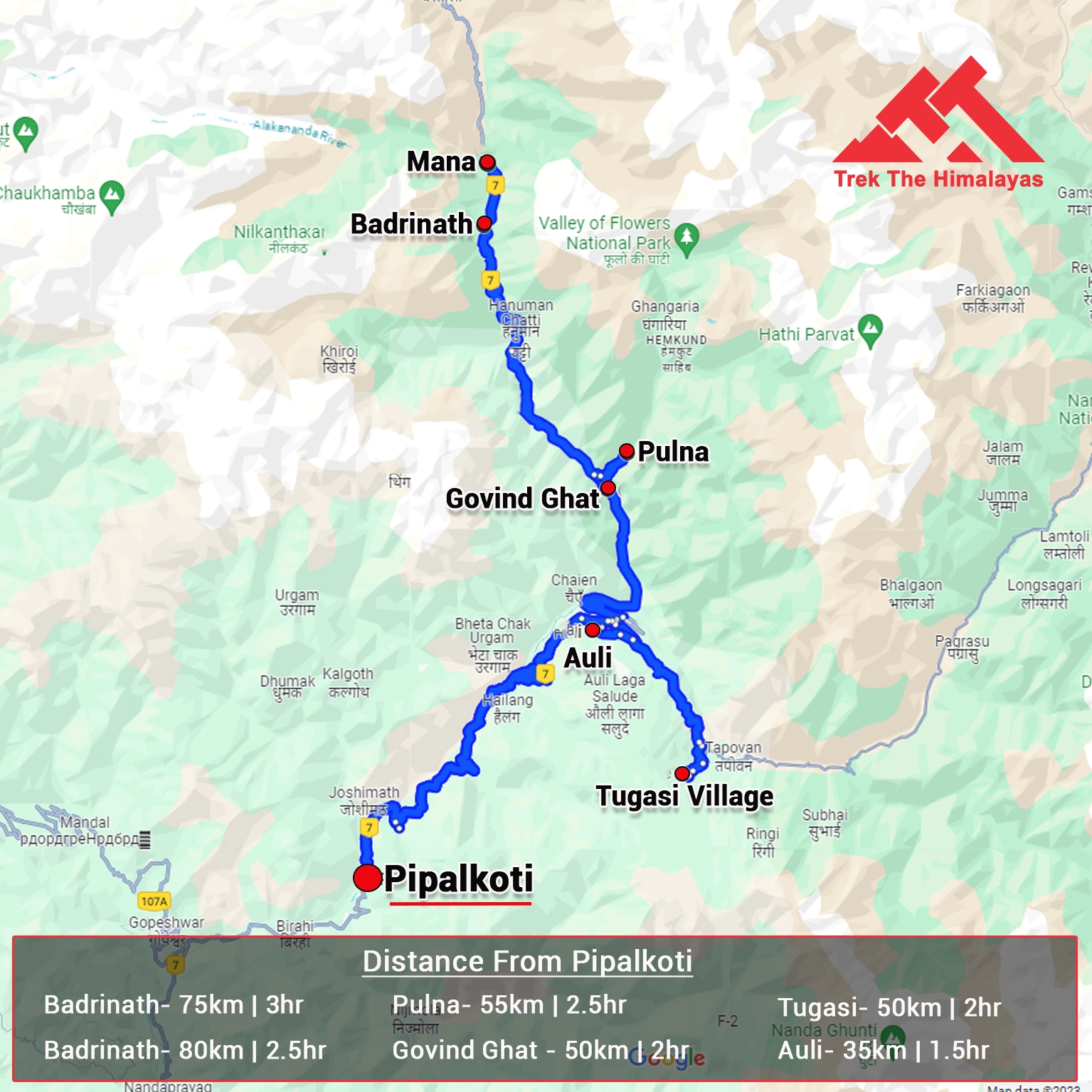
Cost Terms
Inclusion
1. Accommodation (as per the itinerary):
- Guest house, Home Stay.
- Camping while the trek (Twin sharing basis).
2. Meals (Veg + Egg):
- Meals while on trek(Veg + Egg).
3. Support:
- 1 Versatile base camp manager: handles communication and deploys extra manpower in emergencies.
- 1 Mountaineering & First aid qualified professional trek Leader.
- 1 Experienced high altitude chef.
- Local experienced guides (Number of guides depending on the group size).
- Enough support staff.
4. Trek equipment:
- Sleeping bag, Sleeping liners (if required), Mattress, Utensils.
- 3 men all season trekker tent (twin sharing), Kitchen & Dining tent, Toilet tent.
- Camping stool, Walkie talkie.
- Ropes, Helmet, Ice axe, Harness, Gaiters & Crampon (if required).
5. First aid:
- Medical kit,Stretcher,Oxygen cylinder,Blood pressure monitor,Oximeter,Stethoscope.
6. Transportation (as per the itinerary):
- Transport from Loharjung to Loharjung.
7. Mules/porters to carry the central luggage.
8. Cloakroom facility available at the base camp for additional luggage.
9. All necessary permits and entry fees, Upto the amount charged for Indian.
10. Trek Completion Certificate.
Exclusion
- Insurance (For non-Indian Nationals, NRI or OCI card holders).
- Food during the transit.
- Any kind of personal expenses.
- Mule or porter to carry personal luggage.
- Emergency evacuation, hospitalization charge, etc.
- Any extra costs incurred due to extension/change of the itinerary due to natural calamities roadblocks, vehicle breakdown, etc. factors beyond our control
- Anything not specifically mentioned under the head Inclusion.
Things can be provided on demand and availability (participant has to pay extra for these things).
1- Satellite phone/set phone - is a type of mobile phone that connects via radio links via satellites orbiting the Earth instead of terrestrial cell sites like cellphones. Therefore, they can operate in most geographic locations on the Earth's surface.
2- Gamow/PAC HAPO Bag (Portable Hyperbaric Bag) - is a unique, portable hyperbaric chamber for the treatment of acute mountain sickness (AMS), also known as altitude sickness.
3- AEDs (Automated External Defibrillators) - are portable life-saving devices designed to treat people experiencing sudden cardiac arrest, a medical condition in which the heart stops beating suddenly and unexpectedly.
Cancellation Terms
To request a cancellation, please email us at info@trekthehimalayas.com using your registered email ID.
Cancellations prior to 25 days from the start of the Trip
Refund Options
- 5% deduction of trek fee
- 100% trek fee cash voucher for any trip till one year
- Transfer your trek (any trek, any date) to your friend
Cancellation between 24 days and 15 days to the start of the Trip
Refund Options
- 30% deduction of trek fee
- 100% trek fee cash voucher for same trip till one year
- 85% trek fee cash voucher for any trip till one year
- Transfer your trek (same trek, any date) to your friend
Cancellation between 14 days and 10 days to the start of the Trip
Refund Options
- 50% deduction of trek fee
- 80% trek fee cash voucher for same trip till one year
- 70% trek fee cash voucher for any trip till one year
- Book the same trek, in the same season, with any other batch
- Transfer your trek (same trek, any date) to your friend
Cancellation less than 9 days to the start of the trek.
Refund Options
- No cash refund
- 20% trek fee cash voucher for the same trip till one year
- 10% trek fee cash voucher for any trip till one year
- Transfer your trek (same trek, same date) to your friend
- To reschedule a trek (same trek only), a 30 % rescheduling fee of the trek cost will apply.
Cancellation Policy (Emergency Cases):
In case of a death in the immediate family (parents, siblings, spouse, children) or if the trekker is hospitalized (min. 48 hours) or suffers a fracture (leg/arm) within a week before the trek, even if canceled a day before:
90% trek fee refund in cash & 10% as a voucher (valid for 1 year, for any India trek).
Valid documents required. We’re here to support you during tough times.
Note:
- Change of trek batch is dependent on the availability of seats in the batch
- In case of transferring a trek to a friend, he/she should satisfy all the mandatory requirements put forward by TTH
- TTH holds the right to change/cancel the policies, without prior notice
Booking and Payments
- The Participant is responsible for verifying the accuracy of all details, including Trip dates and personal documentation, at the time of booking.
- Payments must be made in accordance with the timelines and instructions provided by TTH. Late payments may result in cancellation of booking without refund.
- In the event of a cash refund, only the portion of the payment made in cash shall be eligible for refund in cash. Any booking made using voucher, discounts, promotional codes, or through any non-cash mode of payment shall not be eligible for a cash refund under any circumstances.
- Refunds, if applicable, shall be processed within 15–30 working days of confirmation.
- All add-on bookings are subject to the respective add-on cancellation policy, and refunds will be processed accordingly.
- Voucher Terms
- This is a non-transferable voucher
- The voucher cannot be merged with any other offer of Trek The Himalayas
- The voucher is valid for Trek booked directly with Trek The Himalayas in India
- To avail the voucher please use your register phone number or e-mail id
- All the other Terms of booking a trek with Trek The Himalayas are applicable to the voucher
Itinerary and Modifications
- TTH reserves the right to modify, shorten, or cancel any part of the Trip due to transportation delays, weather, health emergencies, or other unforeseen circumstances including Force Majeure.
Cancellations and Refunds
- No refunds or vouchers, partial or otherwise, shall be provided for voluntary withdrawal, non-utilisation of services, or removal from the Trip.
- If TTH cancels the Trip before arrival at the designated pick-up point due to unforeseen circumstances or Force Majeure, the Participant may choose from:
- An alternate Trip/date.
- A credit voucher valid for one (1) year.
- Transfer to another Trip, with cost differences payable by the Participant.
- If the Trip is abandoned post-arrival at the designated pick-up point, no cash refund or voucher shall be issued. The Trek Again Policy may apply at TTH’s discretion.
- TTH shall not be liable for any associated travel costs such as flights, accommodation, or visa fees.
Force Majeure
- Events beyond its control including but not limited to earthquakes, landslides, strikes, curfews, war, pandemic, government restrictions, heavy rainfall or snowfall, windstorms, road blockages, trail disruption, or withdrawal of permits, TTH shall not be held liable for any cancellation, delay, or service modification caused by Force Majeure.
Trek Essentials
Rent EquipmentPDF Of Trek Essential Download
| Backpack with rain cover | (50 - 60 ltr) with comfortable shoulder straps |
| Day pack with rain cover | 20 - 30 ltr (If off-load opted) |
| Walking stick | Advisable (At least one) |
| Water Bottle / Hydration pack | 2 bottles of one liter each, People who use hydration pack 1 hydration pack and 1 bottle of one liter, Carry at least one thermos flask. |
| Small size tiffin/lunch box | 1 Nos |
| Snacks | Energy bars, dry fruits, electral/ors |
| Personal Medical Kit | Consult your doctor |
| T-Shirt (Synthetic quick dry) | 1 Full & 2 Half sleeves |
| Fleece T-shirt | 1 Nos |
| Fleece jacket | 1 Nos |
| Windproof Jacket | 1 Nos |
| Down feather / Hollow jacket | 1 Nos |
| Thermal inner (Upper and Lower) | 1 Pair |
| Trek Pant (Synthetic quick dry) | 2 Nos |
| Fleece Pant | 1 Nos |
| Waterproof gloves | 1 Pair |
| Fleece / woollen gloves | 1 Pair |
| Poncho / waterproof Jacket and pant | 1 Nos |
| Sunscreen | 1 Nos |
| Moisturiser | 1 Nos |
| Chap-stick / Lip balm | 1 Nos |
| Toothbrush and toothpaste | 1 Nos |
| Toilet paper & Wipes | 1 Nos |
| Soap / hand sanitizers | 1 Nos |
| Antibacterial powder | 1 Nos |
| Quick dry towel | 1 Nos |
| Head torch | 1 Nos. (Avoid Hand torch) |
| Sun Cap | 1 Nos |
| Woolen cap | 1 Nos. |
| Balaclava | 1 Nos. |
| Buff / Neck-gaiters | 1 Synthetic & 1 Woollen |
| Sunglasses | UV with dark side cover, People who wear spectacles - (A)- Use contact lenses | (B)- Photo chromatic glasses |
| Trekking shoes | 1 Pair (Water-resistant, high ankle, good grip) |
| Floaters / flip-flops | 1 Pair |
| Cotton socks | 6 pairs |
| Woollen socks | 1 pairs |
| Gaiters | 1 Pair (TTH provides when required) |
| Micro spikes | 1 Pair (TTH provides when required) |
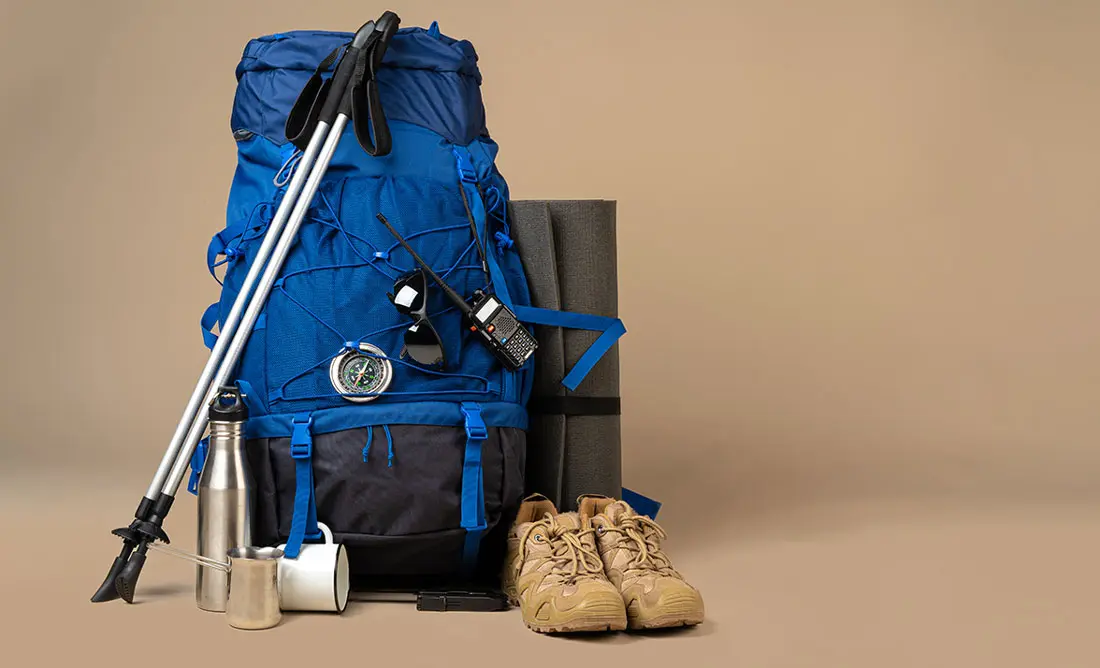
Frequently Asked Questions(FAQ)
To register with TTH, visit our website - www.trekthehimalayas.com and create your account. To create your account you will need to use your email address and fill in all the details, set your unique password and your account is ready to use.
- To book a trek with TTH, you first need to register with us and create an account.
- Choose the trek that you want to do and click on available dates.
- You will land at the login page, fill in the required details.
- Add Participants, choose add-on services click on the Pay now button, choose your preferred payment method, and make the payment. TTH accepts multiple payment options, including credit/debit cards, net banking, and UPI.
- You will receive a confirmation email from TTH with all the necessary details about the trek, including the meeting point, transportation, accommodation, and other important instructions.
- Click Here to watch Video
please send an email to us at info@trekthehimalayas.com or reach out to the numbers provided in the Help and Support section of your Trek Page. We will ensure that your issue is promptly resolved.
To book services such as off-load luggage and transportation, you can find them listed as add-ons. These additional services can be booked at the time of your initial booking. If you miss booking add-ons during the initial reservation, you can log in anytime and easily book 4 days before the departure date add-ons through the platform.
If you have booked the wrong trek or selected the wrong date, don’t worry! You can contact us at +91 9368882322 (Monday to Saturday, 10 AM to 10 PM) or email us at info@trekthehimalayas.com. You can also discuss this with your trek coordinator. Please make sure to inform us at least 10 days before the departure of your trek. Only then can we help you reschedule or arrange another trek for you.
We recommend visiting our "Suggest Me a Trek" page. By filling out the form, our experts will contact you with the best possible trek options based on your preferences and experience level. Alternatively, you can reach out to us via email at info@trekthehimalayas.com or give us a call using the numbers provided on our website for personalized assistance and recommendations.
Family treks differ from regular treks by focusing on ease of difficulty, offering shorter durations for younger participants, Kid-friendly and easily digestible foods, child-friendly activities, maintaining a higher guide ratio for diverse age groups, and implementing additional safety measures for families.
Family Trek with Kids recommendation Only Dayara Bugyal and Chopta Chandrashila Trek.
Minimum age for TTH treks is typically 7 years, though this may vary depending on the specific trek.
Yes, you can take a kids to a high-altitude trek with a parent. Discuss with a trek expert before booking a trek.
- Junior trekkers (below 15 years) should have a company of parents/guardians.
- Trekkers between 15 to 18 years can come solo with the disclaimer form signed by parent/guardian.
- Medical & Disclaimer Form (Mandatory Documents) Click here to download medical and disclaimer form
Physical Fitness: Ensure your child is physically fit. Engage them in regular exercise, outdoor activities, and hikes to build stamina and endurance. Hydration: Emphasize the importance of staying hydrated at high altitudes. Encourage your child to drink water regularly, even if they don't feel thirsty. Proper Nutrition: Provide a well-balanced diet with sufficient carbohydrates for energy and foods rich in iron to prevent altitude sickness. Adequate Sleep: Ensure your child gets enough sleep in the days leading up to the trek. Quality rest is crucial for altitude adaptation. Educate on Altitude Sickness: Teach your child about the symptoms of altitude sickness, such as headache, nausea, and dizziness. Encourage them to communicate any discomfort immediately. Appropriate Clothing and Gear: Dress your child in layers to adjust to changing temperatures. Ensure they have appropriate trekking gear, including sturdy footwear. Positive Mindset: Foster a positive mindset. Encourage your child, and let them know it's okay to take breaks when needed. Medical Check-Up: Schedule a medical check-up before the trek to ensure your child is fit for high-altitude activities. Consult with a healthcare professional about any potential health concerns.
TTH takes special care to provide wholesome and nutritious food for children on treks. Here are some of the foods that are typically served for children:
Breakfast: For breakfast, TTH serves a variety of options like porridge, cornflakes, bread, butter, jam, honey, boiled eggs, omelettes, and pancakes. Children can choose from these options to fuel themselves for the day's trek.
Lunch: For lunch, TTH serves lunch which includes rotis, vegetables, rice, dal, and salad. The rotis are usually made fresh on the trek and are a good source of carbohydrates. The dal and vegetables provide protein and other essential nutrients.
Snacks: TTH provides healthy snacks like fresh fruits, dry fruits, energy bars, cookies, and biscuits to keep the children energized throughout the day.
Dinner: For dinner, TTH serves a hot and wholesome meal which includes soup, rice, dal, vegetables, and a non-vegetarian dish (if requested in advance). Children can also choose from a variety of desserts like custard, jelly, and fruit salad.
Dietary requirements: If a child has any special dietary requirements, TTH can cater to those needs as well. For example, if a child is lactose intolerant or allergic to nuts, the kitchen staff can make arrangements to accommodate those requirements.
Choosing the right trek for a beginner can be a bit overwhelming as there are many factors to consider such as distance, elevation gain, terrain difficulty, weather, and time of year. Here are some tips that can help you choose the right trek for a beginner:
1. Determine fitness level: Assess the fitness level of the beginner to understand their physical capabilities. This will help you select a trek that is challenging but not too difficult.
2. Choose a well-traveled trail: A well-traveled trail will have more amenities such as signposts, water stations, and shelter. It is also safer as there will be other hikers on the trail.
3. Consider the length of the trek: For beginners, it is recommended to start with a shorter trek that can be completed in a day or two. This will help them get acclimatized to trekking and build their confidence.
4. Look for gradual elevation gain: Choose a trek with a gradual elevation gain rather than steep ascents. This will make the trek easier and more enjoyable.
5. Check the weather: Check the weather forecast before selecting a trek. Avoid treks during the monsoon season or winter when the trails can be slippery or dangerous.
6. Research the trail: Read about the trail to get an idea of the terrain, altitude, and difficulty level. This will help you select a trek that is suitable for the beginner.
7. Consult with an expert: If you are unsure about which trek to choose, consult our trek expert Mr. Nitin (+91 70600 59773) between 10 AM to 6 PM (Tuesday - Friday). Mr. Nitin will provide you valuable advice and guidance.
Overall, it is important to choose a trek that is enjoyable, challenging but not too difficult, and suitable for the beginner's fitness level and experience.
It is not recommended for a beginner to choose a difficult Himalayan trek. Trekking in the Himalayas can be physically and mentally challenging, especially if you are not used to the high altitude, steep slopes, and rugged terrain. Choosing a difficult trek without the proper experience, fitness level, and preparation can be dangerous and put you at risk of altitude sickness, injury, and other hazards.
If you are a beginner, it is recommended to start with an easier trek and gradually build up your skills and experience. This will help you understand the challenges of trekking in the Himalayas, and also prepare you physically and mentally for a more difficult trek in the future. It is also important to choose a trek that matches your fitness level, experience, and interest.
There is no specific age limit for a beginner trekker. However, it is important to consider your physical fitness, health condition, and personal interests before embarking on a trek. Trekking in the Himalayas can be physically and mentally demanding, and requires a certain level of physical fitness and endurance.
If you have any pre-existing medical conditions or are above a certain age, it is recommended to consult with a doctor before embarking on a trek. It is also important to listen to your body and take breaks as needed during the trek to prevent exhaustion or injury.
We recommend visiting our "Suggest Me a Trek" page. By filling out the form, our experts will contact you with the best possible trek options based on your preferences and experience level. Alternatively, you can reach out to us via email at info@trekthehimalayas.com or give us a call using the numbers provided on our website for personalized assistance and recommendations.
Yes, you can join the trek. We have fixed departure groups where you can simply book your trek and we will take care of curating a group.
Before you start the trek, it is recommended that you make all the necessary phone calls as during the trek you may or may not receive network coverage, once you come back to the Base Camp, you can reconnect with your family via phone once again. You can share your trek coordinator contact detail with your family members to get the latest updates about your trek batch.
At TTH, we provide wholesome and nutritious meals during the trek. The food is vegetarian and includes a variety of dishes such as rice, dal, vegetables, chapati, paratha, pasta, noodles, and soup. We also offer snacks such as biscuits, and salty, and dry fruits during the trek. Special dietary requirements such as vegan, gluten-free, or Jain food can also be arranged if informed in advance.
If you are allergic to some foods, you need to let us know in advance so that we can make arrangements accordingly.
TTH is a trekking company that prioritizes the safety of all its participants, including women trekkers. We have a comprehensive safety system in place, which includes a dedicated team of experienced and trained trek leaders and support staff who are equipped to handle emergency situations and provide first aid.
TTH also takes specific measures to ensure the safety and comfort of women trekkers. They have a separate tent accommodation for women trekkers, female trek leaders, and support staff. They also provide separate toilet facilities for women and encourage a safe and respectful environment for all trekkers.
Moreover, TTH has a strict policy against any kind of harassment and has a zero-tolerance policy towards such incidents. They have a designated Internal Complaints Committee (ICC) to investigate and address any complaints related to harassment or misconduct. Overall, TTH has a good reputation for safety and responsible trekking practices, and women can feel comfortable and safe while trekking with them.
In case you are the only women in the group, we provide a single sleeping arrangement. Also, during the trek, the trek leader will always remain by your side to provide optimum safety and reassurance.
You can reach out to the trek coordinator to inquire about the number of female trekkers and their respective states who have booked the trek. Please note that the trek coordinator cannot disclose personal details of any trekker. Once you've confirmed your booking, a WhatsApp Group will be created for all the trekkers in your batch. This allows you to connect with fellow trekkers before the trek begins.
While many of our treks are led by female trek leaders, however, it is not possible to know which trek leader is assigned to which group. But nonetheless, whether the trek leader is male or female you can be completely assured of your safety and security with us.
Yes, it is possible to trek with periods. However, it is important to take some extra precautions and preparations to ensure a comfortable and safe trekking experience. Here are some tips that can help you trek during your period:
1. Use menstrual hygiene products that you are comfortable with, such as tampons, pads, or menstrual cups. It is recommended to carry enough supplies for the entire duration of the trek.
2. Pack wet wipes, hand sanitizer, and plastic bags to dispose of used hygiene products.
3. Wear comfortable and breathable clothing that allows for easy movement and reduces friction. Avoid wearing tight or restrictive clothing that can cause discomfort.
4. Carry pain relief medication, such as ibuprofen or acetaminophen, in case of menstrual cramps.
5. Stay hydrated and maintain a balanced diet to support your energy levels and overall health.
6. Take breaks as needed and listen to your body. If you feel uncomfortable or experience any unusual symptoms, seek medical attention immediately. It is also recommended to consult with a doctor before going on a trek during your period, especially if you have a pre-existing medical condition or are taking medication.
By taking necessary precautions and being prepared, you can have a safe and comfortable trekking experience even during your period. We provide proper disposal facilities for sanitary pad disposal during the trek.
We offer three person tents with twin-sharing for optimum comfort. A woman trekker will share a tent with another woman trekker and if you are the only woman in the group, you will be given a single accommodation for your comfort and privacy.
Yes, we do provide gears on rent. You can book it using you TTH account directly.
Mountaineering qualified Experienced and first aid certified Trek Leader, First Aid Certify local guide, Cook, helpers and supporting staff.
People suffering from Bronchitis, Asthma, High blood pressure, Epilepsy (got faints), TB , Heart problem or on higher BMI side are strictly not allowed to go on any Himalayan trek. Apart from this if you had any medical history, please let us know.
No. Alcohol and smoking isn’t allowed while on trek. It is totally misconception that it will keep you warm. Your body need to acclimatize properly and for that eat properly and drink enough water; these things will keep you warm.
Toilet tents provide a convenient solution for answering nature's call in the great outdoors. Dry toilets, in particular, offer a highly sanitary approach. By digging a pit and utilizing mud and a shovel, you can easily cover up your waste. This method ensures cleanliness and hygiene while camping or exploring in the forest.
Remember to pack essential toiletries to complete your outdoor bathroom kit and maintain proper personal hygiene during your adventures. With these practices in place, you can enjoy nature while also respecting it.
Layer Up From Head To Toe
Eat Full Meals, never sleep empty stomach
You can keep warmee (if you’re more susceptible to cold).
Use sleeping bag in right way and don’t leave free space in sleeping bag.
For upper body
– Thermal layer
– T-shirt (full-sleeves)
– Fleece T-shirt (for extreme colds)
– Fleece layer
– Thick Jacket/Down Jacket
– Waterproof or Windproof layer (outermost layer, when it is snowing or raining)
- For Lower Body
– Thermal layer
– Hiking pants (normal) or Winter hiking pants
Based on how warm you feel you can skip any of the above layers. Your outer later should be windproof since it is windy at high altitude.
The idea behind layering is that the more insulation you have the less cold you feel, and instead of wearing a very thick jacket if you wear multiple layers, your body will be better insulated against the cold.
Yes, we provide micro spikes and gaiters, if required.
Mandatory documents: 2 xerox of ID having address (addhar card/driving license), 2 Passport size photographs, hard copy Medical form signed & sealed by doctor, disclaimer form sign by trekker and high altitude insurance.
No. We don’t but we can suggest you good hotel/Stay nearby pick up location.
Yes, trekker must carry 2 water bottles 1 litre each so they can refill it at campsite for drinking and keep themselves hydrate.
You should buy shoes which has these three features –Good grip, Ankle Support and additional water resistant layers. Generally, we advise Quechua Trek 100, MH 500 and MH 100.
No one is forced to go on. There is always enough staff to split the party according to need and regroup later at the camp. Most people have no trouble reaching the highest campsite. If some members decide not to climb the final distance they can wait for the climbers to come back down the same way or take a lateral path to the descent route.
The Roopkund Trek is a journey of adventure and discovery that takes you through some of the most stunning landscapes of the Indian Himalayas. The trek is named after the mysterious Roopkund Lake, also known as the Skeleton Lake, which is situated at an altitude of 15, 696 feet. The trek is a perfect blend of natural beauty, adventure, and culture, as it takes you through dense forests, alpine meadows, glacial valleys, and traditional Himalayan villages. The highlight of the trek is the Roopkund Lake, which is surrounded by snow-capped peaks and offers breathtaking views of the surrounding mountains. The lake is also known for its mysterious skeletons, which are believed to be the remains of ancient travelers who perished in a hailstorm. The Roopkund Trek is a must-do for anyone seeking an unforgettable trekking experience in the Himalayas.
Roopkund Trek is a 53 km trek.
Roopkund Trek takes 8 days to complete the trek.
The best time to do the Roopkund Trek is during summer (mid-Apr to Jun) and autumn (Sep to mid-Nov).
The maximum altitude reached during the Roopkund Trek is 15,696 ft.
Roopkund Trek is a moderate - difficult grade trek.
The highlights of the Roopkund Trek include the Roopkund Lake, grand views of Chaukhambha Range, Kedarnath, Kedar Dome, and Neelkanth Peak, camping in picturesque campsites.
During the Roopkund Trek, you will stay in a guest house in the base camp, and on the slopes you will be staying in tents (twin-sharing).
Yes, it is safe to do Roopkund Trek with an expert organization. However, it is always advisable to take necessary precautions and follow safety guidelines issued by the Trek Leaders and guide while trekking in the mountains.
Here's a list of essential items to pack for the Roopkund Trek:
Trekking shoes: A good pair of trekking shoes with a sturdy sole and ankle support is essential for the trek.
Backpack: A backpack with a capacity of 40-50 litres is suitable for carrying your essentials, including clothing, food, and water.
Warm clothing: The temperature at high altitudes can drop significantly, so it's important to carry warm clothing, including thermal layers, fleece jackets, and a down jacket.
Rain gear: The weather in the mountains can be unpredictable, so it's important to carry a rain jacket and pants to stay dry.
Trekking pants: Lightweight, quick-drying pants that are comfortable to walk in are ideal for the trek.
Headlamp or flashlight: A headlamp or flashlight with extra batteries is necessary for navigating through dark trails and campsites.
Water bottle: A reusable water bottle with a capacity of at least 1 litre is necessary to stay hydrated during the trek.
Sunglasses and sunscreen: The sun's UV rays can be strong at high altitudes, so it's important to carry sunglasses and sunscreen with a high SPF.
Basic first aid kit: A basic first aid kit with essential items like band-aids, antiseptic cream, and pain relievers can come in handy in case of injuries.
Personal hygiene kit: Toiletries like wet wipes, hand sanitizer, and tissues can help you maintain personal hygiene during the trek.
Yes, it is recommended to have prior trekking experience before attempting the Roopkund Trek as it is considered a moderately difficult trek. The trail involves steep ascents and descents, and the altitude can also be a challenge. It is important to have good physical fitness and stamina to complete the trek comfortably. Prior trekking experience can help you to be better prepared for the challenges of the trek, such as acclimatization, managing your energy levels, and dealing with the rugged terrain. However, if you are in good physical condition and have a positive attitude, with proper guidance and preparation, you can still attempt the Roopkund Trek even if you are a beginner.
Yes, it is highly recommended to hire a professional expert for the Roopkund Trek, especially if you are a beginner or have limited trekking experience. A professional can provide you with valuable assistance, including knowledge of the local terrain, weather conditions, and the culture of the region. They can also help you with navigation and ensure your safety throughout the trek.
